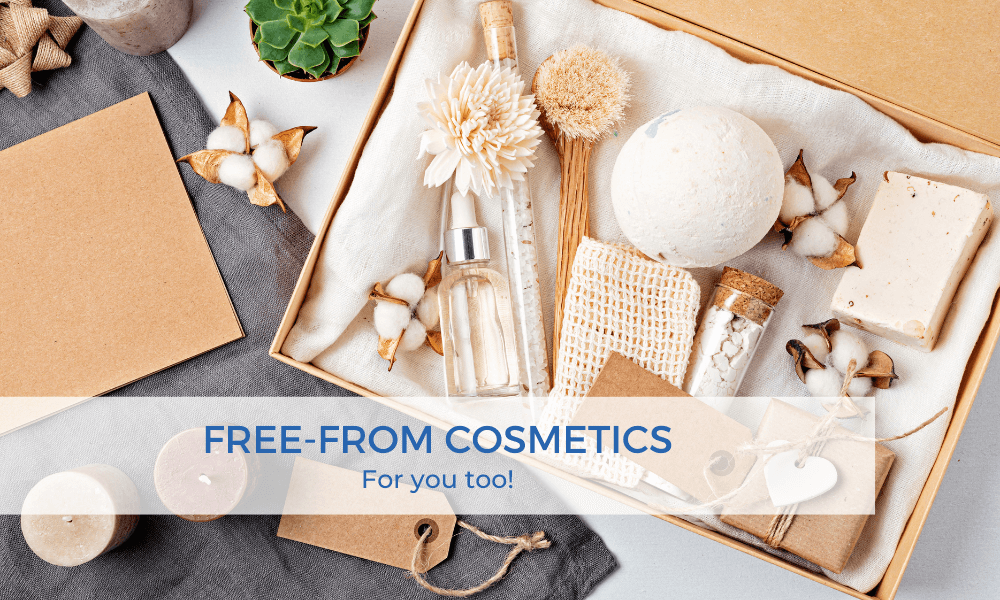
100% VS 95% NATURAL INGREDIENTS – THE SECRET TO NATURAL HAIR CARE
Nowadawys, we finally have a little time to look into what cosmetics we use every day and what ingredients are in the products we’ve been grabbing off the shelves out of habit for quite some time. While we are more conscious consumers than we were a few years ago, there may still be ingredients we overlook or don’t realize their importance when choosing cosmetics. Through (social) media, we hear constantly about animal testing, veganism is on the rise, and interest in natural ingredients has noticeably increased. So how do we choose what’s right for us?
Many may think a natural approach and chemical freeness is just a trend or a passing fashion, but it’s based on far more solid decisions. That being said, it can be beneficial to see the marketing behind it. Why is it so important to choose chemical-free cosmetics based on natural ingredients, especially when it comes to hair care? And how can we be sure we’ve made the right choice? Read this article to learn about chemical-free, natural products and their labels.
Beyond marketing, let’s look at the labels!
When we start eyeing a product, it’s usually the design that makes the first impression. We instinctively pick up a shampoo from the shelf if we like the packaging, and there’s nothing wrong with that! Marketing experts work hard to ensure that a product’s packaging not only reflects its category—whether it’s exclusivity, high quality, mid-range, or low cost—but also conveys the product’s message: the purpose it serves and the values it represents. So packaging is not just an innocent necessity; it’s a link between the product and the consumer, capable of “speaking” to its target audience in the moment. However, this is something that brand owners often play into as well.
It’s no coincidence that when we step into a drugstore as consumers dedicated to natural ingredients, we immediately spot natural cosmetics. On one hand, the packaging colors often convey a sense of nature (green, brown), and on the other hand, labels boldly declare 100% natural, organic, made with 95% natural ingredients, or made from organic materials. While the first impression may be positive, it’s crucial to choose wisely among these options!
- 0% label
The “0%” label should raise caution! Although it may list all the harmful chemicals the product doesn’t contain, and the product might be 100% natural, there’s no guarantee. The “0%” label is often a clever distraction. Think about it: when a product emphasizes what it doesn’t contain, who takes the time to thoroughly read what it does contain? The “0%” claim can easily convince us that we’ve chosen a product free from chemicals and harmful substances. But this can be misleading! How often do we see “0% parabens” or “0% petroleum derivatives” on a product, only to find SLS-SLES (sulfates) or silicone listed prominently among the ingredients? It’s quite the deception, isn’t it?
- 95% organic or natural ingredients label
The “95% organic or natural ingredients” label isn’t much different from the “0%” claim. It always begs the question: if almost the entire product consists of natural ingredients, what makes up the remaining few percent, and why is it necessary? By regulation, products with a minimum of 95% organic ingredients receive organic certification. The remaining 5% may consist of non-organic, chemically produced substances. In shampoos, this typically refers to ingredients that enhance foaming (SLS) or create a silky effect (silicone), which can damage your hair just as much as the 95% natural ingredients care for it—ultimately neutralizing the desired effects.
- "made with organic…" label
The “made with organic…” label brings to mind phrases like “100% cold-pressed avocado,” which we instantly associate with being 100% natural. However, in this case, it only means that 100% of the avocado content in the product is cold-pressed, but it doesn’t reveal how much of the product is actually avocado. Similarly, “made with organic” feels like a “contains traces of” label, though it’s a bit better.
This certification is granted to products that contain at least 70% natural ingredients, and the label must specify which ingredients are organic. The label only applies to the highlighted ingredients, meaning that “Made with organic aloe vera” refers exclusively to the aloe vera content, not the other ingredients. However, the ingredient list must indicate the percentage of each component in the product.
- 100% natural or organic label
The “100% natural or organic” label likely needs no explanation, as it clearly indicates that the product contains only natural ingredients. However, it’s important to consider what replaces the ingredients that the 95% labeled products substitute with chemicals. Nowadays, there is a natural alternative for every chemical, though it may be less cost-effective. Let’s take a look at the organic ingredients that 100% natural hair care products use to achieve the desired effects!
Organic Ingredients Instead of Chemicals
Cosmetic companies and manufacturers prioritizing environmental protection and health over cost-efficiency are working tirelessly to ensure their products are chemical-free. Their decision is justified, as while chemically enriched products may bring immediate satisfaction to consumers, they ultimately damage the scalp and hair structure over time. Sourcing natural ingredients requires a larger financial investment, but if it’s important to us to provide quality products and our customers also strive to make conscious choices for their health, it’s clearly worth it.
In fact, many people struggle with hair loss, scalp irritation, dandruff, or excessive oiliness or dryness, issues often caused by improper hair care routines and the use of chemically enriched hair care products. The effects that major brands’ high-chemical content hair care products provide can be achieved by natural products as well, using alternative solutions.

Broccoli Seed Oil vs. Silicone
Silicone is found in nearly all shampoos and hair treatments, forming an invisible layer on the surface of the hair that makes it feel silky and shiny—one of the reasons why we “love” it. However, this silicone layer blocks essential nutrients and moisture from absorbing into the hair. Moreover, as time passes, you’ll need to use more and more silicone to maintain that initial silky shine. Silicone is a stubborn ingredient that can take months to wash out of the hair.
In contrast, broccoli seed oil offers all the benefits of silicone. Thanks to its Omega-9 fatty acid content, it leaves the hair shiny and radiant. The oil is lightweight, non-greasy, and easily absorbed into the skin, acting as a valuable emollient. It’s an excellent moisturizer and skin nourishment while providing a silicone-like effect on both the hair and skin.
Preservatives vs. Fennel
Preservatives, like sodium benzoate, are common ingredients in cosmetics, but in natural hair care products, fennel extract replaces them. Fennel also offers antioxidant properties, fighting signs of aging. It provides the body with essential minerals such as iron, zinc, selenium, and calcium, which help ensure the scalp receives adequate oxygen, keeping the skin healthy.
Sulfates (SLS-SLES) vs. Glyceryl Oleate
Cleansing is the primary function of shampoos, usually achieved by sulfates. Sulfates are undeniably effective, giving shampoos their rich lather, which enhances the user experience and creates a sense of cleanliness. However, SLS is a harsh, aggressive agent that strips the hair of essential oils, breaks down proteins, and hinders healthy hair growth. Its natural alternative is glyceryl oleate, derived from oils rich in oleic acid and fats. It acts as an emollient, cleanser, and thickener all in one.
Fragrance vs. Natural Perfume
Why are synthetic fragrances in products a problem? These ingredients can cause severe skin irritation. That’s why products intended for babies or sensitive skin often contain minimal or no fragrance at all. In 100% natural products, the term “perfume” refers exclusively to natural fragrances, which can still cause irritation but are much gentler. There’s nothing quite like the natural scent of almond, coconut, or lime!
Animal vs. Plant-Based Keratin
Keratin is a vital protein for healthy hair, making up 90% of the hair’s structure. It nourishes damaged, dry, and brittle hair while strengthening and protecting the skin. Animal-derived keratin is found in most conditioners and shampoos, but a great plant-based alternative exists in wheat protein. If you choose vegan natural cosmetics, you don’t have to worry about the absence of keratin—the microproteins extracted from wheat completely replace animal keratin.
How to Choose Natural Hair Care Products
Take a moment to review the labels of your hair and body care products. By researching the role of different ingredients, understanding their pros and cons, and being aware of their presence in your everyday products, you can gain a clearer picture of what you’re putting on your body.
Oxygeni Hair products are carefully formulated with expertly selected active ingredients, protecting the skin from artificial, harmful substances.

Author: Dóri Albert
OXYGEN THERAPY AND OXYGENI HAIR PRODUCT REVIEWS







Follow us on our social media platforms!







